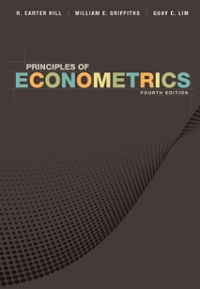Question
1. Which of the following is correct about the loanable funds market? Group of answer choices A. The real interest rate reflects the rate of
1. Which of the following is correct about the loanable funds market?
Group of answer choices
A. The real interest rate reflects the rate of return lenders receive after accounting for inflation.
B. Investment refers to household purchases of stocks and corporate bonds.
C. Savings > Investment in a closed economy.
D. All of the above are correct.
2. Financial intermediaries are
Group of answer choices
A. markets where lenders can directly lend money to borrowers, such as a stock market.
B. individuals who make profits by buying a stock low and selling it high.
C. a more general name for financial assets such as stocks, bonds, and checking accounts.
D. financial institutions through which savers can indirectly provide funds to borrowers, such as a bank.
3. Suppose that in a closed economy GDP is 11,000, consumption is 7,500, and taxes are 2,000. If national savings is 1,000, what is government purchases equal to? Is the government running a budget deficit or surplus?
A. 2,500; deficit
B. 2,500; surplus
C. 1,000; deficit
D. 1,000; surplus
4. If there is a surplus of loanable funds, then
Group of answer choices
A. the quantity of loanable funds demanded is greater than the quantity of loanable funds supplied and the interest rate is above equilibrium.
B. the quantity of loanable funds demanded is greater than the quantity of loanable funds supplied and the interest rate is below equilibrium.
C. the quantity of loanable funds supplied is greater than the quantity of loanable funds demanded and the interest rate is above equilibrium.
D. the quantity of loanable funds supplied is greater than the quantity of loanable funds demanded and the interest rate is below equilibrium.
5. Crowding out occurs when investment declines due to
Group of answer choices
A. a government budget deficit, which causes interest rates to fall.
B. a government budget deficit, which causes interest rates to rise.
C. a government budget surplus, which causes interest rates to fall.
D. a government budget surplus, which causes interest rates to rise.
Step by Step Solution
There are 3 Steps involved in it
Step: 1

Get Instant Access to Expert-Tailored Solutions
See step-by-step solutions with expert insights and AI powered tools for academic success
Step: 2

Step: 3

Ace Your Homework with AI
Get the answers you need in no time with our AI-driven, step-by-step assistance
Get Started


